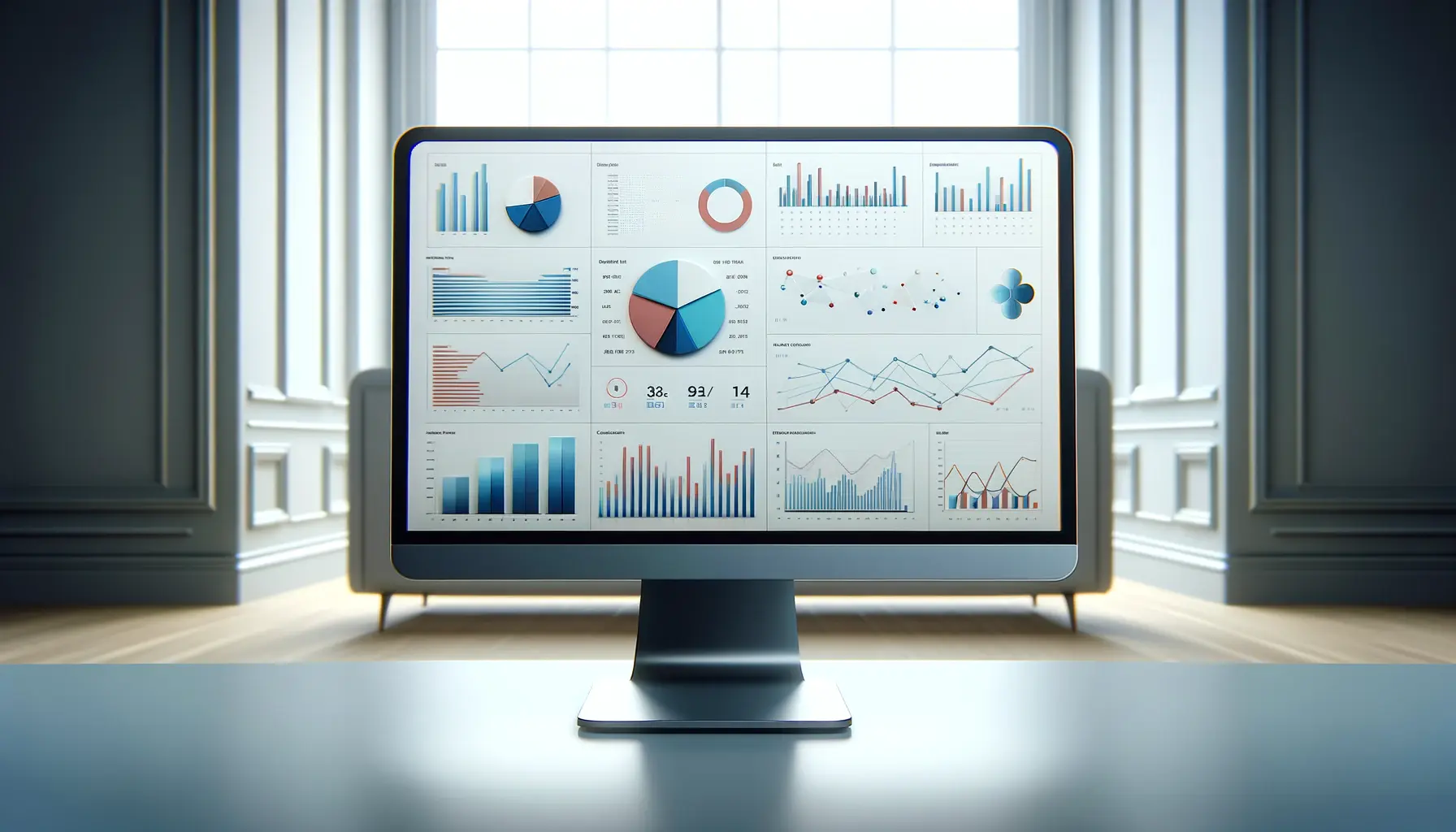Embarking on the journey of optimizing a website for search engines, one often overlooks the subtle art of strategic internal linking.
Yet, this technique is a cornerstone in the vast landscape of SEO.
Internal linking, when executed with precision and insight, can propel a website’s visibility, usability, and ranking in search engine results.
This article delves into the intricacies of strategic internal linking, unraveling its significance and best practices for achieving SEO success.
At its core, strategic internal linking is not just about creating hyperlinks within a website.
It’s an intricate process that involves understanding how different pages on a site relate to each other and how search engines interpret these connections.
By weaving a web of links that is both user-friendly and search engine optimized, a website can significantly enhance its online presence and searchability.
- Understanding the Basics of Internal Linking
- Types of Internal Links and Their SEO Impact
- Strategies for Implementing Internal Links
- Advanced Techniques in Internal Linking
- Measuring the Impact of Internal Linking on SEO
- Common Mistakes to Avoid in Internal Linking
- Future Trends in Internal Linking and SEO
- Conclusion: Mastering Strategic Internal Linking for SEO Triumph
- FAQs on Strategic Internal Linking for SEO
Understanding the Basics of Internal Linking
Before diving into the complexities of strategic internal linking, it’s crucial to grasp its basic concept.
Internal linking refers to the practice of creating links that connect one page of a website to another page within the same domain.
These links are pivotal in guiding visitors through the website, enhancing their user experience, and encouraging them to explore more content.
From an SEO perspective, internal links are instrumental in helping search engines discover new pages and understand the structure of a website.
They act as pathways that lead search engine crawlers through various pages, enabling them to index the site more effectively.
This indexing plays a vital role in how a website ranks in search engine results pages (SERPs).
Benefits of Strategic Internal Linking
Implementing a well-thought-out internal linking strategy offers numerous benefits.
It not only improves site navigation but also enhances the relevance of a page to specific keywords.
This relevance is achieved by using descriptive, keyword-rich anchor texts in internal links, which signal to search engines the content of the linked page.
Another significant advantage of internal linking is the distribution of ‘link equity’ across the website.
Link equity, often referred to as ‘link juice’, is the value passed from one page to another through hyperlinks.
Strategic internal linking ensures that this value is evenly distributed, boosting the SEO performance of various pages, especially those that are crucial for the business.
Key Point: Strategic internal linking enhances user experience, improves site navigation, and distributes link equity, thereby boosting a website’s SEO performance.
- Enhances user navigation and experience
- Improves page relevance for specific keywords
- Distributes link equity across the website
Types of Internal Links and Their SEO Impact
Internal links can be categorized into various types, each serving a unique purpose in the SEO ecosystem.
Understanding these types is essential for crafting a strategic internal linking plan.
The most common types include navigational, contextual, and footer links.
Navigational links are typically found in the website’s main menu and guide users through the site’s primary sections.
These links are crucial for user experience and help search engines understand the site’s hierarchy.
Contextual links, on the other hand, are embedded within the content, linking to related topics or further information.
They are highly valuable for SEO as they establish content relevancy and encourage deeper engagement with the site.
Optimizing Contextual Links for SEO
Contextual links are particularly potent in SEO.
They are embedded naturally within the content, providing a seamless experience for the reader while guiding them to additional relevant information.
To optimize these links, it’s important to use descriptive anchor texts that accurately reflect the content of the target page.
This not only aids in user navigation but also helps search engines in understanding the linked page’s content, thereby improving its ranking for related keywords.
Another aspect of optimizing contextual links is ensuring the relevance of the linked content.
Linking to pages that offer significant value and further exploration of the topic enhances the user’s experience and keeps them engaged on the site longer, which is a positive signal to search engines.
Effective Use of Navigational and Footer Links
Navigational links should be structured to reflect the website’s hierarchy, making it easy for users and search engines to find the most important sections.
Footer links, while often overlooked, can also be strategic.
They are ideal for linking to important pages like privacy policies, contact information, or popular resources, thus providing easy access and improving site structure.
However, it’s crucial to avoid overloading the footer with links, as this can be seen as spammy by search engines.
A balanced approach, focusing on user needs and site architecture, is key to leveraging navigational and footer links effectively.
Note: While optimizing internal links, focus on user experience and site hierarchy, using descriptive anchor texts and maintaining relevance and balance in link placement.
- Navigational links for site hierarchy and user navigation
- Contextual links within content for relevancy and engagement
- Footer links for easy access to important information
Strategies for Implementing Internal Links
Developing an effective internal linking strategy requires a blend of SEO knowledge and a deep understanding of your website’s content and structure.
The goal is to create a network of links that not only benefits SEO but also provides value to your users.
Here are some key strategies to consider:
Firstly, identify your cornerstone content – the most important pages that you want to rank higher in search engines.
These pages should receive the most internal links, preferably from pages with high authority or traffic.
This approach helps in distributing link equity to these key pages, enhancing their visibility in SERPs.
Creating a Logical Site Structure
A logical and well-organized site structure is the foundation of any successful internal linking strategy.
This involves organizing your content into categories and subcategories, ensuring that each page is easily accessible within a few clicks from the homepage.
Such a structure not only improves user navigation but also helps search engines crawl your site more effectively.
Using breadcrumb navigation is another effective way to reinforce site structure.
Breadcrumbs provide a clear path for users to follow back to the homepage and help search engines understand the hierarchy and context of the website’s content.
Linking Deep into Your Website
Deep linking, or linking to pages that are not just your homepage or contact page, is crucial for spreading link equity throughout your site.
Focus on linking to in-depth blog posts, product pages, or other informative sections that might not be immediately visible.
This not only improves the SEO value of these pages but also enhances the overall user experience by providing easy access to a wealth of information.
Remember, the key to a successful internal linking strategy is to keep it natural and user-focused.
Over-optimizing with excessive or irrelevant links can be detrimental to both user experience and SEO performance.
Idea: Utilize a mix of deep linking, logical site structure, and breadcrumb navigation to create a user-friendly and SEO-optimized internal linking network.
- Focus on cornerstone content for link equity distribution
- Organize content logically for easy navigation and effective crawling
- Employ deep linking to distribute link value across the site
Advanced Techniques in Internal Linking
While basic internal linking strategies are essential, advancing to more sophisticated techniques can further enhance your website’s SEO performance.
These advanced methods involve a deeper analysis of your site’s structure and content, as well as the implementation of more nuanced linking practices.
One such technique is the use of anchor text variations.
Instead of repeatedly using the exact keyword phrases, varying your anchor text can appear more natural to search engines and users.
This variation helps avoid potential penalties associated with over-optimization and improves the overall readability of your content.
Utilizing Link Analysis Tools
Link analysis tools can provide invaluable insights into your internal linking structure.
These tools help identify which pages have the most internal links, the distribution of link equity, and potential opportunities for additional linking.
Regularly auditing your site with these tools ensures that your internal linking strategy remains effective and aligned with your SEO goals.
Another advanced technique is to leverage content clusters.
By grouping related content together and linking these pages to a central ‘pillar’ page, you create a focused network of information around a particular topic.
This not only enhances user experience but also signals to search engines the relevance and depth of your content on specific subjects.
Addressing Orphan Pages
Orphan pages, which are not linked from any other page on your site, can be detrimental to your SEO efforts.
Identifying and linking to these orphan pages can improve their visibility and ensure that they contribute to your site’s overall SEO performance.
This process involves a thorough crawl of your website to detect any pages that are disconnected from your internal linking structure.
Implementing these advanced internal linking techniques requires a careful balance between SEO optimization and maintaining a natural, user-friendly experience.
The goal is to create a rich, interconnected web of content that is both accessible to users and favorable to search engines.
Featured Info: Advanced internal linking involves using anchor text variations, link analysis tools, content clusters, and addressing orphan pages to enhance SEO and user experience.
- Vary anchor texts for natural linking
- Use link analysis tools for insights into link structure
- Create content clusters around pillar pages
- Identify and link to orphan pages
Measuring the Impact of Internal Linking on SEO
Understanding the impact of your internal linking strategy on SEO is crucial for continuous improvement.
Measuring this impact involves analyzing various metrics and KPIs that reflect the performance of your internal links.
This analysis helps in fine-tuning your strategy for optimal results.
One key metric to monitor is the organic traffic flow to your internally linked pages.
An increase in organic traffic to these pages can indicate that your internal linking strategy is effectively guiding users and search engine crawlers.
Additionally, tracking the rankings of your key pages can provide insights into the effectiveness of your internal links in boosting their search engine visibility.
Using Analytics to Track User Behavior
Analytics tools play a vital role in measuring the impact of internal linking.
These tools can track user behavior on your site, including the paths they take, the pages they linger on, and the links they click.
This data is invaluable in understanding how your internal links influence user navigation and engagement.
Another important aspect to consider is the bounce rate and time spent on page.
Ideally, effective internal linking should lead to a lower bounce rate and increased time spent on each page, as users find more relevant content to explore.
SEO Performance and Link Equity
SEO performance metrics, such as page authority and domain authority, can also indicate the success of your internal linking strategy.
A rise in these metrics can suggest that your internal links are effectively distributing link equity, thereby enhancing the authority of your pages.
It’s important to remember that the impact of internal linking is not always immediate.
SEO is a long-term strategy, and changes in internal linking can take time to reflect in performance metrics.
Regular monitoring and adjustments are key to achieving and maintaining SEO success through internal linking.
Truth: Regular analysis of organic traffic, user behavior, bounce rate, and SEO performance metrics is essential to measure and optimize the impact of internal linking on SEO.
- Monitor organic traffic and rankings of linked pages
- Analyze user behavior and engagement through analytics
- Track SEO performance metrics for link equity distribution
Common Mistakes to Avoid in Internal Linking
While internal linking offers numerous benefits for SEO, certain pitfalls can hinder its effectiveness.
Being aware of these common mistakes is crucial for ensuring that your internal linking strategy supports, rather than detracts from, your SEO efforts.
One of the most common mistakes is overusing exact-match anchor text.
This practice can appear manipulative to search engines and may lead to penalties.
It’s important to use natural, varied anchor text that accurately describes the linked content, thereby avoiding any semblance of artificial manipulation.
Ignoring Link Relevance and Quality
Another mistake is linking to irrelevant or low-quality pages.
Internal links should always be relevant to the content they are embedded in and should lead to pages that offer value to the user.
Linking to irrelevant or low-quality pages can harm the user experience and diminish the perceived quality of your site in the eyes of search engines.
Additionally, some websites neglect the opportunity to link to deep, valuable content, focusing instead on top-level pages like the homepage or contact page.
This approach misses the chance to distribute link equity throughout the site and improve the visibility of in-depth content.
Overlooking Technical Aspects of Internal Linking
Technical issues, such as broken links or improper redirects, can also undermine your internal linking strategy.
Regularly auditing your site for broken links and fixing any issues promptly is essential for maintaining the integrity of your internal linking structure.
Finally, avoid creating too many links on a single page.
An excessive number of links can overwhelm users and dilute the link equity passed to each linked page.
Striking a balance between the number and quality of internal links is key to an effective internal linking strategy.
False Information: Overusing exact-match anchor text, linking to irrelevant pages, neglecting deep content, and ignoring technical issues are common mistakes in internal linking strategies.
- Avoid overusing exact-match anchor text
- Ensure relevance and quality in linked content
- Link to deep, valuable pages, not just top-level pages
- Regularly check for and fix broken links
- Maintain a balanced number of links per page
Future Trends in Internal Linking and SEO
As the digital landscape continues to evolve, so do the trends and best practices in SEO and internal linking.
Staying ahead of these trends is crucial for maintaining a competitive edge in search engine rankings.
Emerging technologies and changing search engine algorithms constantly shape the future of internal linking strategies.
One significant trend is the increasing importance of AI and machine learning in search algorithms.
These technologies allow search engines to better understand the context and relevance of content, making sophisticated internal linking strategies more crucial than ever.
Websites will need to focus on creating more natural and contextually relevant internal links to stay aligned with these advancements.
Enhanced User Experience and Mobile Optimization
Another trend is the growing emphasis on user experience (UX) in SEO.
Search engines are increasingly prioritizing sites that offer a seamless, intuitive user experience, including easy navigation and relevant internal linking.
Additionally, with the rise of mobile browsing, optimizing internal links for mobile users is becoming more important.
As voice search becomes more prevalent, the way users interact with content and navigate websites is changing.
This shift may influence how internal links are structured and presented, with a focus on more conversational and question-based anchor texts.
Integration with Other SEO and Marketing Strategies
Internal linking is also becoming more integrated with broader SEO and digital marketing strategies.
This integration involves aligning internal links with content marketing, social media strategies, and overall brand messaging to create a cohesive and comprehensive online presence.
Looking ahead, the key to successful internal linking will be adaptability and a deep understanding of evolving SEO trends.
By staying informed and flexible, websites can leverage internal linking to enhance their SEO performance and provide a better experience for their users.
Idea: Future trends in internal linking include adapting to AI and machine learning, focusing on UX and mobile optimization, aligning with voice search, and integrating with broader marketing strategies.
- Adapt to AI and machine learning in search algorithms
- Emphasize UX and mobile optimization in internal linking
- Align internal links with voice search trends
- Integrate internal linking with overall marketing strategies
Conclusion: Mastering Strategic Internal Linking for SEO Triumph
In the dynamic world of SEO, mastering the art of strategic internal linking is not just a technique, but a necessity for digital success.
This comprehensive exploration of internal linking has underscored its pivotal role in enhancing website navigation, distributing link equity, and ultimately boosting SEO performance.
As we’ve navigated through the various aspects of internal linking, from basic types to advanced strategies and future trends, it’s clear that a well-executed internal linking plan is a powerful tool in any SEO arsenal.
Key Takeaways for SEO Enthusiasts
Strategic internal linking is a multifaceted approach that requires ongoing attention and adaptation.
It’s not just about linking pages; it’s about creating a coherent web of information that is both user-centric and search engine friendly.
The key takeaways include the importance of understanding different types of internal links, the necessity of a logical site structure, and the value of measuring the impact of your linking strategies.
Additionally, staying aware of common pitfalls and aligning with future trends are crucial steps towards ensuring your internal linking strategy remains robust and effective.
As we look towards the future, the integration of AI and machine learning in search algorithms, the emphasis on user experience, and the rise of mobile and voice search are set to redefine the parameters of effective internal linking.
These evolving trends demand a proactive and informed approach to internal linking, one that harmonizes with broader SEO and marketing strategies.
- Embrace a user-centric approach in internal linking
- Adapt to evolving SEO trends and technologies
- Integrate internal linking with broader digital marketing strategies
In conclusion, strategic internal linking for SEO success is a continuous journey of learning, adapting, and optimizing.
By embracing these principles and staying attuned to the ever-changing SEO landscape, websites can not only enhance their online presence but also provide a richer, more engaging experience for their users.
The path to SEO success is intricately linked with the strategic weaving of internal links, making it an indispensable part of any effective SEO strategy.
Want your website to top Google search rankings? Leave the SEO to our professional agency!
FAQs on Strategic Internal Linking for SEO
Explore these frequently asked questions to deepen your understanding of strategic internal linking and its impact on SEO.
Strategic internal linking refers to the deliberate placement of hyperlinks within a website, connecting one page to another to improve SEO and user navigation.
Internal linking enhances SEO by distributing link equity, aiding in site indexing, and improving user experience and site navigation.
Key types include navigational, contextual, and footer links, each serving different roles in site structure and user experience.
Anchor text provides context to both users and search engines, indicating the content of the linked page, which aids in relevancy and ranking.
Yes, strategic internal linking can enhance page authority by distributing link equity and increasing a page’s visibility and relevance.
Link equity refers to the value or authority passed from one page to another through internal links, influencing a page’s ranking potential.
Regular audits, ideally quarterly, are recommended to ensure link functionality, relevance, and optimal distribution of link equity.
Mobile optimization ensures internal links are accessible and user-friendly on mobile devices, crucial for user experience and mobile SEO.










